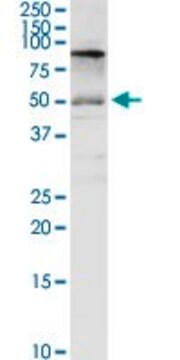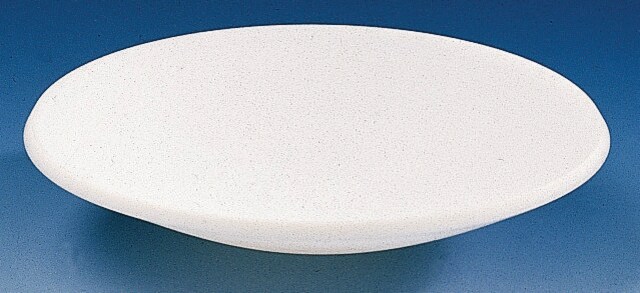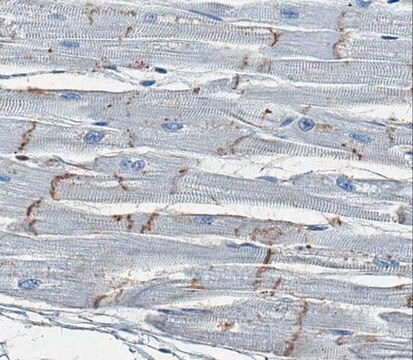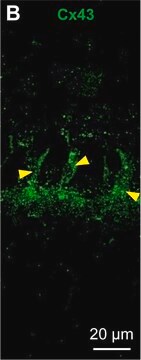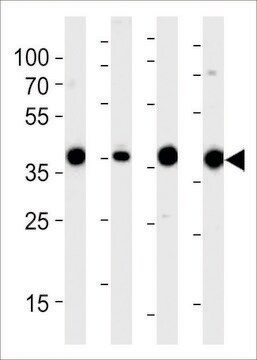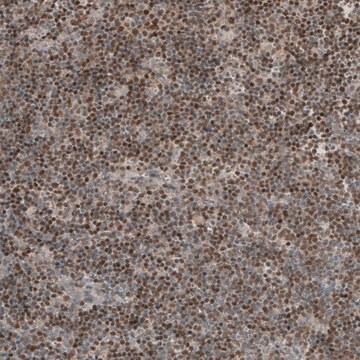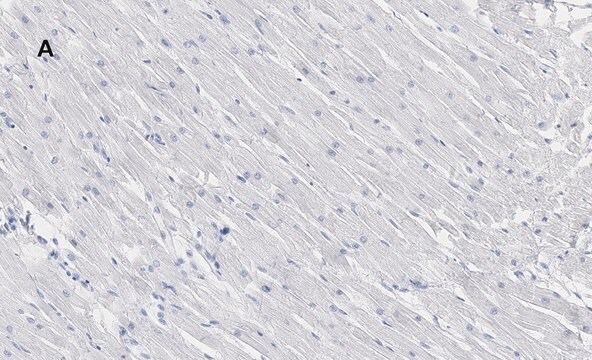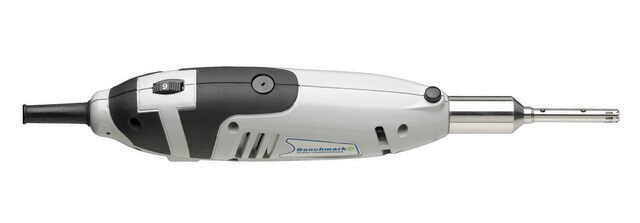推薦產品
生物源
rabbit
品質等級
共軛
unconjugated
抗體表格
IgG fraction of antiserum
抗體產品種類
primary antibodies
無性繁殖
polyclonal
形狀
buffered aqueous solution
物種活性
human
技術
proximity ligation assay: suitable
western blot: 1 μg/mL
UniProt登錄號
運輸包裝
dry ice
儲存溫度
−20°C
目標翻譯後修改
unmodified
基因資訊
human ... CCNE1(898)
一般說明
Cyclin E1 (CCNE1) is encoded by the gene mapped to human chromosome 19q12–q21.
The protein encoded by this gene belongs to the highly conserved cyclin family, whose members are characterized by a dramatic periodicity in protein abundance through the cell cycle. Cyclins function as regulators of CDK kinases. Different cyclins exhibit distinct expression and degradation patterns which contribute to the temporal coordination of each mitotic event. This cyclin forms a complex with and functions as a regulatory subunit of CDK2, whose activity is required for cell cycle G1/S transition. This protein accumulates at the G1-S phase boundary and is degraded as cells progress through S phase. Overexpression of this gene has been observed in many tumors, which results in chromosome instability, and thus may contribute to tumorigenesis. This protein was found to associate with, and be involved in, the phosphorylation of NPAT protein (nuclear protein mapped to the ATM locus), which participates in cell-cycle regulated histone gene expression and plays a critical role in promoting cell-cycle progression in the absence of pRB. Two alternatively spliced transcript variants of this gene, which encode distinct isoforms, have been described. Two additional splice variants were reported but detailed nucleotide sequence information is not yet available. (provided by RefSeq)
免疫原
CCNE1 (NP_001229.1, 1 a.a. ~ 410 a.a) full-length human protein.
Sequence
MPRERRERDAKERDTMKEDGGAEFSARSRKRKANVTVFLQDPDEEMAKIDRTARDQCGSQPWDNNAVCADPCSLIPTPDKEDDDRVYPNSTCKPRIIAPSRGSPLPVLSWANREEVWKIMLNKEKTYLRDQHFLEQHPLLQPKMRAILLDWLMEVCEVYKLHRETFYLAQDFFDRYMATQENVVKTLLQLIGISSLFIAAKLEEIYPPKLHQFAYVTDGACSGDEILTMELMIMKALKWRLSPLTIVSWLNVYMQVAYLNDLHEVLLPQYPQQIFIQIAELLDLCVLDVDCLEFPYGILAASALYHFSSSELMQKVSGYQWCDIENCVKWMVPFAMVIRETGSSKLKHFRGVADEDAHNIQTHRDSLDLLDKARAKKAMLSEQNRASPLPSGLLTPPQSGKKQSSGPEMA
Sequence
MPRERRERDAKERDTMKEDGGAEFSARSRKRKANVTVFLQDPDEEMAKIDRTARDQCGSQPWDNNAVCADPCSLIPTPDKEDDDRVYPNSTCKPRIIAPSRGSPLPVLSWANREEVWKIMLNKEKTYLRDQHFLEQHPLLQPKMRAILLDWLMEVCEVYKLHRETFYLAQDFFDRYMATQENVVKTLLQLIGISSLFIAAKLEEIYPPKLHQFAYVTDGACSGDEILTMELMIMKALKWRLSPLTIVSWLNVYMQVAYLNDLHEVLLPQYPQQIFIQIAELLDLCVLDVDCLEFPYGILAASALYHFSSSELMQKVSGYQWCDIENCVKWMVPFAMVIRETGSSKLKHFRGVADEDAHNIQTHRDSLDLLDKARAKKAMLSEQNRASPLPSGLLTPPQSGKKQSSGPEMA
生化/生理作用
Elevated expression of Cyclin E1 (CCNE1) results in ovarian cancer. Thus, CCNE1 can be considered as a potential therapeutic target in ovarian cancer. CCNE1 might act as a key functional mediator in G1/S transition and is considered to be a one of new direct target genes of microRNA (miRNA) precursor mir-7 in human hepatocellular carcinoma (HCC).
外觀
Solution in phosphate buffered saline, pH 7.4
免責聲明
Unless otherwise stated in our catalog or other company documentation accompanying the product(s), our products are intended for research use only and are not to be used for any other purpose, which includes but is not limited to, unauthorized commercial uses, in vitro diagnostic uses, ex vivo or in vivo therapeutic uses or any type of consumption or application to humans or animals.
未找到適合的產品?
試用我們的產品選擇工具.
儲存類別代碼
10 - Combustible liquids
閃點(°F)
Not applicable
閃點(°C)
Not applicable
MicroRNA-7 arrests cell cycle in G1 phase by directly targeting CCNE1 in human hepatocellular carcinoma cells.
Zhang X
Biochemical and Biophysical Research Communications, 443, 1078-1084 (2014)
Genome-wide-array-based comparative genomic hybridization reveals genetic homogeneity and frequent copy number increases encompassing CCNE1 in fallopian tube carcinoma.
Snijders AM
Oncogene, 22, 4281-4286 (2003)
Gene amplification CCNE1 is related to poor survival and potential therapeutic target in ovarian cancer.
Nakayama N
Cancer, 116, 2621-2634 (2010)
Varsha Meghnani et al.
Biochimica et biophysica acta, 1842(7), 1017-1027 (2014-03-13)
The formation of melanoma metastases from primary tumor cells is a complex phenomenon that involves the regulation of multiple genes. We have previously shown that the receptor for advanced glycation end products (RAGE) was up-regulated in late metastatic stages of
Ka Tat Siu et al.
Molecular and cellular biology, 34(17), 3244-3258 (2014-06-25)
The Fbw7 ubiquitin ligase critically regulates hematopoietic stem cell (HSC) function, though the precise contribution of individual substrate ubiquitination pathways to HSC homeostasis is unknown. In the work reported here, we used a mouse model in which we introduced two
我們的科學家團隊在所有研究領域都有豐富的經驗,包括生命科學、材料科學、化學合成、色譜、分析等.
聯絡技術服務